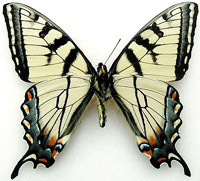Lepidoptera Survey, International

The Taxonomic Report of the International Lepidoptera Survey
Date of this Version
11-1-1998
Document Type
Article
Citation
Taxonomic Report of the International Lepidoptera Survey (November 1, 1998) 1(2): 1-9
Also available at https://lepsurvey.carolinanature.com/ttr/ttr-1-2.pdf
Abstract
On April 24, 1993 a colony of Chlosyne gorgone gorgone was found in Orangeburg County, South Carolina, United States. This led to the rediscovery on April 27, 1993 of C. g. gorgone at its type locality in Burke County, Georgia. This species had not been seen or collected anywhere in east coastal Georgia or coastal South Carolina since its description in 1810. The type locality is xeric, scrub oak sandhill. This habitat is generally unsuitable for the survival of later broods. The larvae of nominate gorgone have only been found on Helianthus divaricatus. Topotypical gorgone differ slightly, but consistently, in phenotype from C. gorgone carlota. In biology, gorgone gorgone is strongly univoltine and thus markedly distinct from the multibrooded subspecies carlota. The range of nominate gorgone is restricted to these univoltine coastal populations. Upland/inland multivoltine populations in Georgia and South Carolina are best referred to subspecies carlota. A neotype of Dryas reticulata gorgone is designated and placed in the Allyn Museum of Entomology (Sarasota, Florida, United States) where the neotype of C. g. carlota is also located. On August 20, 1989, Chlosyne nycteis was also found to occur in Burke County along the Savannah River. The presence, both today and in John Abbot’s day, of two Chlosyne species in Burke County necessitates the reopening of the Melitaea ismeria mystery. Enough evidence now exists to resurrect ismeria and define it correctly as the insect long known as C. nycteis. A neotype of Melitaea ismeria is designated and deposited in the Allyn Museum of Entomology. Ismeria (1833) becomes the binomial species name under Chlosyne. Due to lack of preserved specimens, ismeria is tentatively applied to only the coastal/sandhill populations in eastern Georgia and adjacent South Carolina having broader light areas above and ventral orange borders. Chlosyne ismeria nycteis [new combination] retained as the trinomial name through the remainder of nycteis’ traditional range.


Comments
Copyright 1998, International Lepidoptera Survey. Open access material
License: Creative Commons Attribution-ShareAlike-NonCommercial 4.0 International (CC BY-SA-NC 4.0 International)